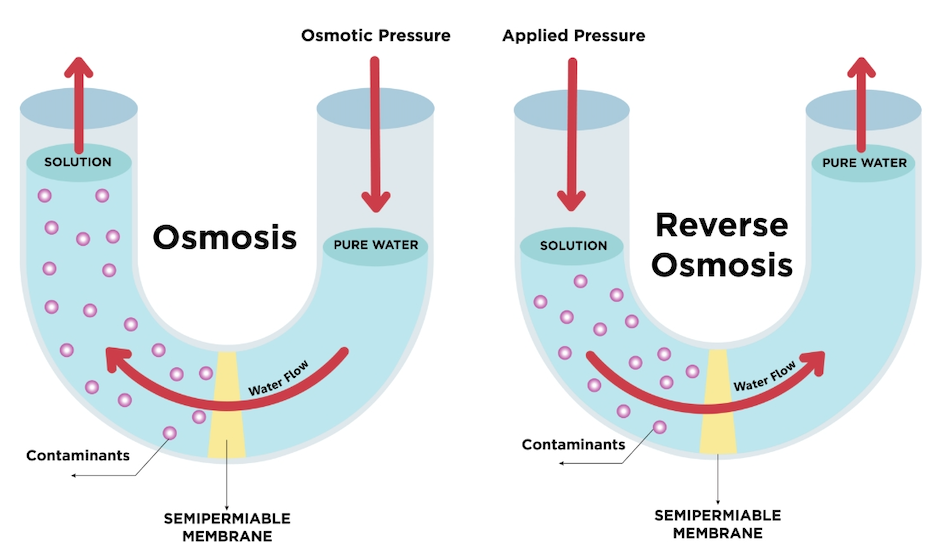The RO water purifiers we use every day are based on a water treatment technology called Reverse Osmosis (RO). But what exactly is osmosis, and how does reverse osmosis work?
What Is Osmosis?
Osmosis is a fundamental natural process essential to many biological systems.
When a semipermeable membrane separates two solutions of different solute concentrations, water naturally moves from the side with lower solute concentration to the side with higher solute concentration. This process continues until the water movement balances out, and the solute concentrations on both sides reach near equilibrium. This phenomenon is known as osmosis, driven by a force called osmotic pressure.
The magnitude of osmotic pressure primarily depends on the number of dissolved solute particles (as described by the Van’t Hoff factor), rather than the type of solute. Osmosis plays a vital role in processes like water absorption in plant roots and fluid balance in human kidneys.
What Is Reverse Osmosis?
Reverse osmosis (RO) is a water purification process that applies external pressure to push water molecules through a semipermeable membrane—from a region of higher solute concentration to one of lower concentration, opposite to the natural direction of osmosis.
The RO membrane, typically made of polyamide, selectively allows only water molecules to pass through, blocking most dissolved salts, organic matter, bacteria, and other impurities. When the applied pressure exceeds the natural osmotic pressure, water is “pushed” through the membrane, leaving contaminants behind. This process is widely used for desalination, demineralization, and deionization.

Can Seawater Be Turned into Freshwater?
Yes. RO technology plays a major role in seawater desalination.
By applying reverse osmosis, salts, suspended solids, and harmful contaminants in seawater can be efficiently removed, producing clean, drinkable water. This technology is already in use in water-scarce regions like the Middle East, parts of Africa, and India.
Key Advantages of Reverse Osmosis
✅ Effective contaminant removal: Eliminates bacteria, viruses, heavy metals, pesticide residues, fluoride, antibiotics, and more.
✅ Improved taste and clarity: RO-treated water is clean, fresh, and odor-free—ideal for drinking, cooking, and brewing tea or coffee.
✅ Broad applications: Used in homes, offices, industries, medical dialysis systems, and seawater desalination plants.
✅ Chemical-free and safe: A purely physical filtration process that requires no chemical additives, making it safe and eco-friendly.
In Summary
Reverse osmosis uses pressure to force water through a semipermeable membrane, allowing only water molecules to pass while blocking most contaminants. The result? Pure, safe, and great-tasting water—every single time.

